Trees Birds Mammals Fish Amphibians Reptiles
Wild Algarve
Bookshop
Psathyrella laevissima (Romagn.) Singer - Slender Stump Brittlestem
Phylum: Basidiomycota - Class: Agaricomycetes - Order: Agaricales - Family: Psathyrellaceae
Distribution - Taxonomic History - Etymology - Identification - Culinary Notes - Reference Sources
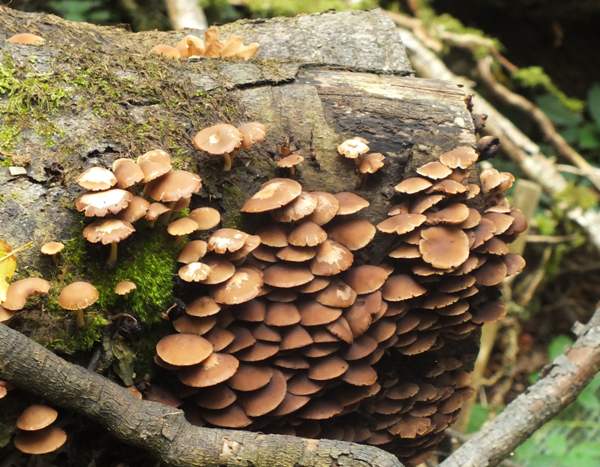
Slender Stump Brittlestems are saprotrophic on dead wood of Beech (Fagus spp.) and Oaks (Quercus spp.), and occasionally other dead hardwoods. Most often these undistinguished gregarious little mushrooms are found on rotting stumps or fallen large branches in shaded locations.
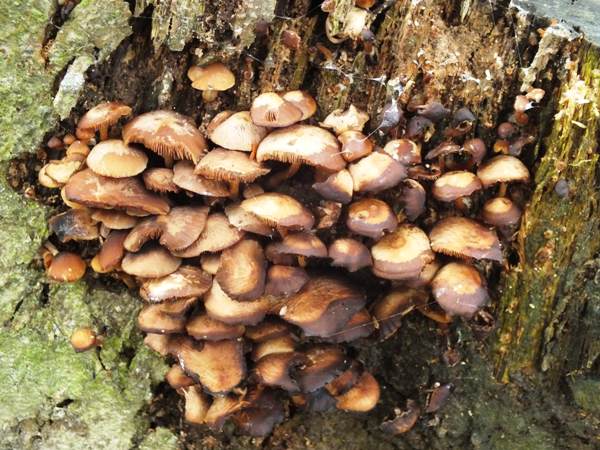
Distribution
Fairly common and widespread in Britain and Ireland, Psathyrella laevissima occurs also in many other countries of central and northern Europe including Denmark, where it is reported to be quite rare, Holland, France and Slovenia.
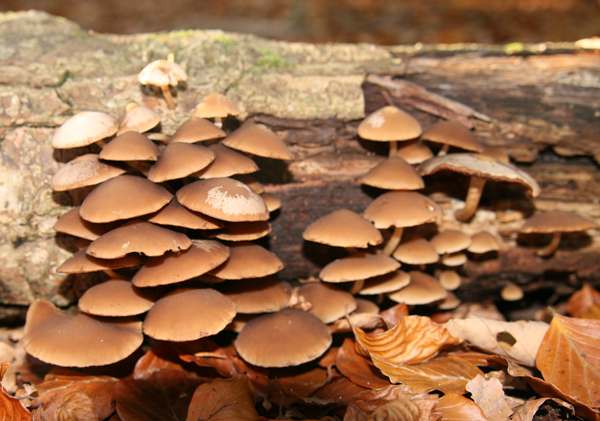
Taxonomic history
This brittlestem mushroom was described scientifically in 1952 by French mycologist Henri Charles Louis Romagnesi (1912 - 1999), who gave it the scientific name Drosophila laevissima. It was in 1969 that German-born American mycologist Rolf Singer transferred it to the genus Psathyrella, establishing the scientific name Psathyrella laevissima by which it is generally known today.
Synonyms of Psathyrella laevissima include Drosophila laevissima Romagn.
Etymology
Psathyrella, the genus name, is the diminutive form of Psathyra, which comes from the Greek word psathuros meaning friable; it is a reference to the crumbly nature of the caps, gills and stems of mushrooms in this genus. The specific epithet laevissima means completely smooth.
Identification guide
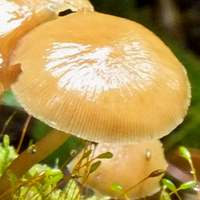
|
Cap
1.5 to 35cm across; broadly convex or conical-convex, flattening often with a slight umbo; smooth; margin lined and becoming wrinkled with age; surface honey brown, becoming mid brown but paler in dry weather; turning dark brown and then blackening when very old. |
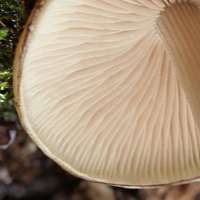 |
Gills
Broadly adnexed, very crowded; pale brown becoming reddish brown with paler edges.
Stem
Whitish above a fragile and often fleeting stem ring, yellowish below; hollow; usually curved due to tufted growing form; 2 to 4cm long; 2 to 4mm diameter; very brittle. |
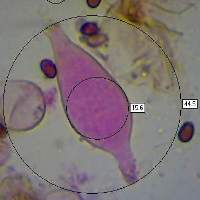 |
Pleurocystidia
Pleurocystidia are few and can be hard to find: mainly fusoid (spindle shaped), 30-45 x 10-15µm, with slightly mucronate pointed tips.
Cheilocystidia: subspherical to broadly clavate (club-shaped), 10-30 x 7.5-20µm. |
 |
Spores
Broadly ellipsoidal, smooth, 5.5-6 x 3-3.5µm with a germ pore.
Spore print
Blackish purple |
Odour/taste |
Not distinctive. |
Habitat & Ecological role |
Saprobic, on decaying hardwoods, particularly Oak or Beech stumps. |
Season |
May to November in Britain and Ireland. |
Culinary Notes
Insubstantial; easily confused with poisonous species such as the Funeral Bell Galerina marginata, and so of no culinary interest..
Reference Sources
Fascinated by Fungi, 2nd Edition, Pat O'Reilly 2016, reprinted by Coch-y-bonddu Books in 2022.
Dictionary of the Fungi; Paul M. Kirk, Paul F. Cannon, David W. Minter and J. A. Stalpers; CABI, 2008
Taxonomic history and synonym information on these pages is drawn from many sources but in particular from the British Mycological Society's GB Checklist of Fungi.
Top of page...
Fascinated by Fungi. Back by popular demand, Pat O'Reilly's best-selling 450-page hardback book is available now. The latest second edition was republished with a sparkling new cover design in September 2022 by Coch-y-Bonddu Books. Full details and copies are available from the publisher's online bookshop...